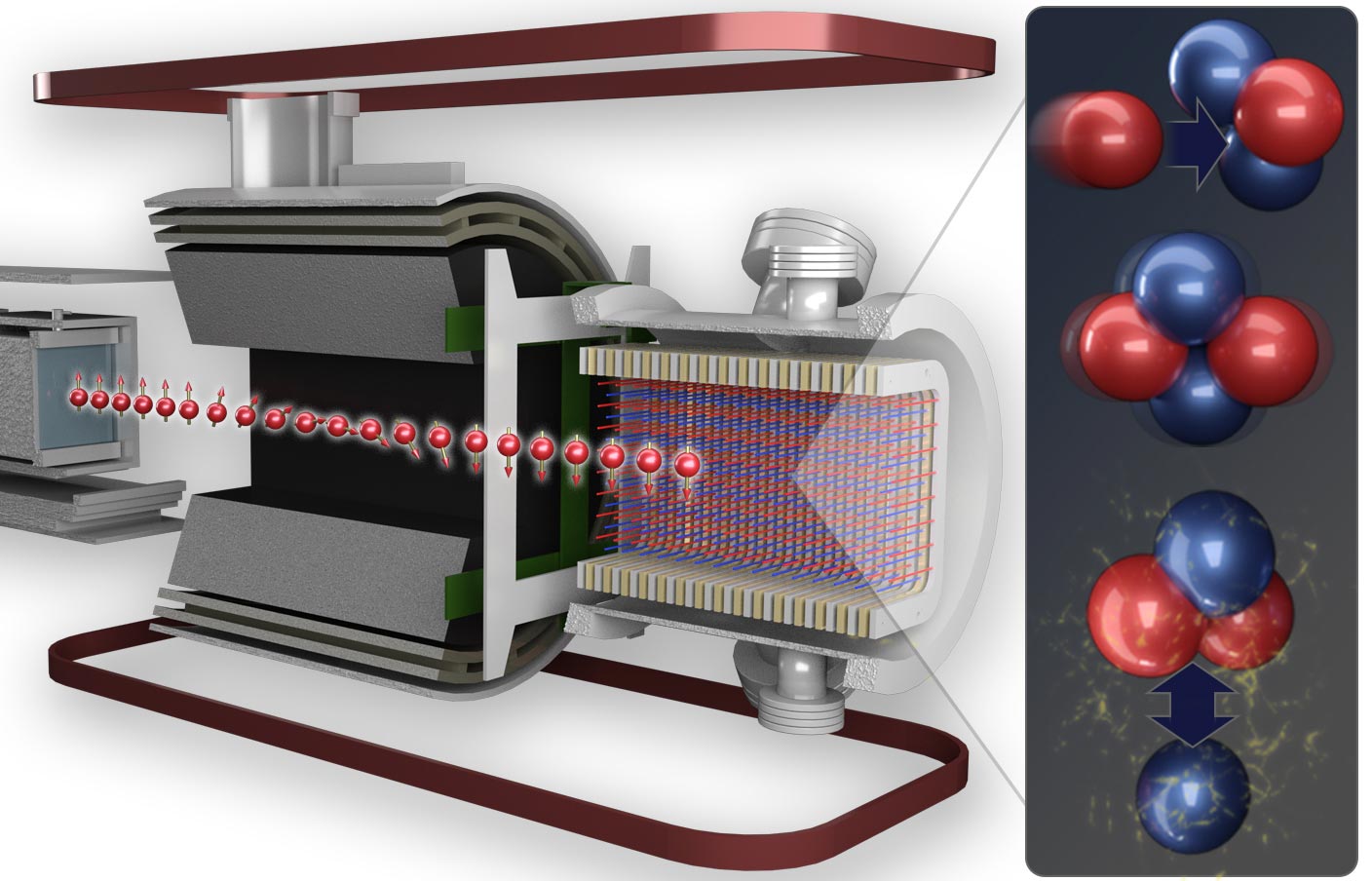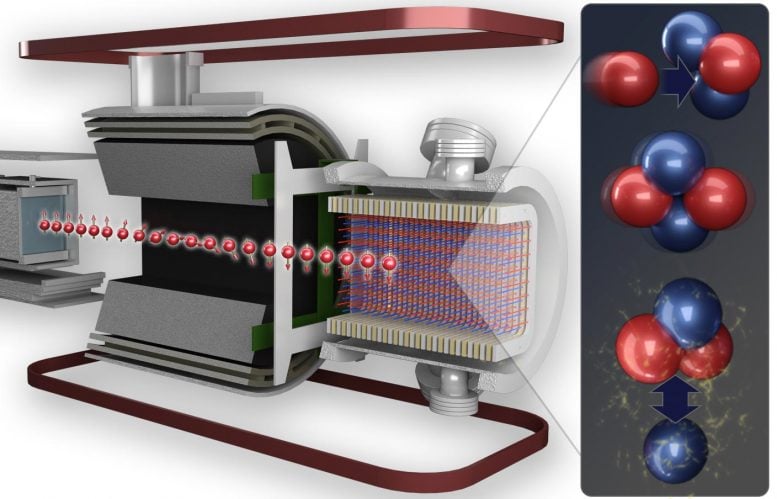

In particle physics, the weak force is essential for transforming quarks, altering atomic structures, and enabling element transmutation.
The weak force is the force that causes a quark to change into a different type of quark or change a quark’s charge. It is one of the three fundamental forces in the Standard Model of Particle Physics—the forces that cannot be reduced to an even smaller force. In the Standard Model of particle physics, the weak force is carried by subatomic particles called W and Z bosons.
Quark Transformations and Element Conversion
By changing quarks to other types of quarks, the weak force converts protons into neutrons and vice versa. This is important because this conversion causes atoms to change from one element to another. Protons contain two up quarks and one down quark. Neutrons contain one up quark and two down quarks. In an atomic nucleus, protons and neutrons are held together by the strong force. In contrast, the weak force doesn’t hold things together or push them apart. Instead, it changes the “flavor” of a quark so that it changes from an up quark to a down quark or vice versa. By changing quarks into different types of quarks, the weak force changes neutrons into protons and protons into neutrons.
The Mechanisms of Weak Interaction and Its Effects
This change describes a process called the “weak interaction.” One type of weak interaction is beta decay, a type of radioactive decay. One form of beta decay is beta plus decay, which involves the weak force causing a proton to change into a neutron. This process releases a positron and an electron neutrino. It also reduces an element’s atomic number by one, turning it into a different element. As a result, carbon-10 decays to boron 10. Another form of beta decay is beta minus decay, which involves the weak force causing a neutron to change into a proton. This process creates an electron and an electron antineutrino. It also increases an atom’s atomic number by one and similarly changes it into a different element. For example, carbon-14 changes to nitrogen-14.
Exploring the Diversity of Weak Interactions
In addition to beta decay, scientists have identified many other types of weak interaction. These weak interactions are either “charged-current” or “neutral-current” interactions. “Charged-current” interactions change a quark’s charge, while “neutral-current” interactions do not. That’s why there are two types of bosons: the W boson carries charge, and the Z boson does not.
Weak Force Facts
DOE Office of Science: Contributions to the Standard Model of Particle Physics
DOE has a long history of supporting research into fundamental particles and the forces that govern them. Five of the six types of quarks, one type of lepton, and all three neutrinos were discovered at institutions that are now DOE national laboratories. Researchers supported by the DOE Office of Science, often in collaboration with scientists from around the world, contributed to Nobel Prize-winning discoveries and measurements that refined the Standard Model.
These efforts continue today. Scientists supported by the DOE Office of Science run experiments that make precision tests of the Standard Model and further improve measurements of particle properties and their interactions. Theorists work with experimental scientists to develop new ways to explore the Standard Model using particle accelerators and other tools. This research may provide insights into unknown particles and forces involved with dark matter, dark energy, and what happened to antimatter after the Big Bang.

